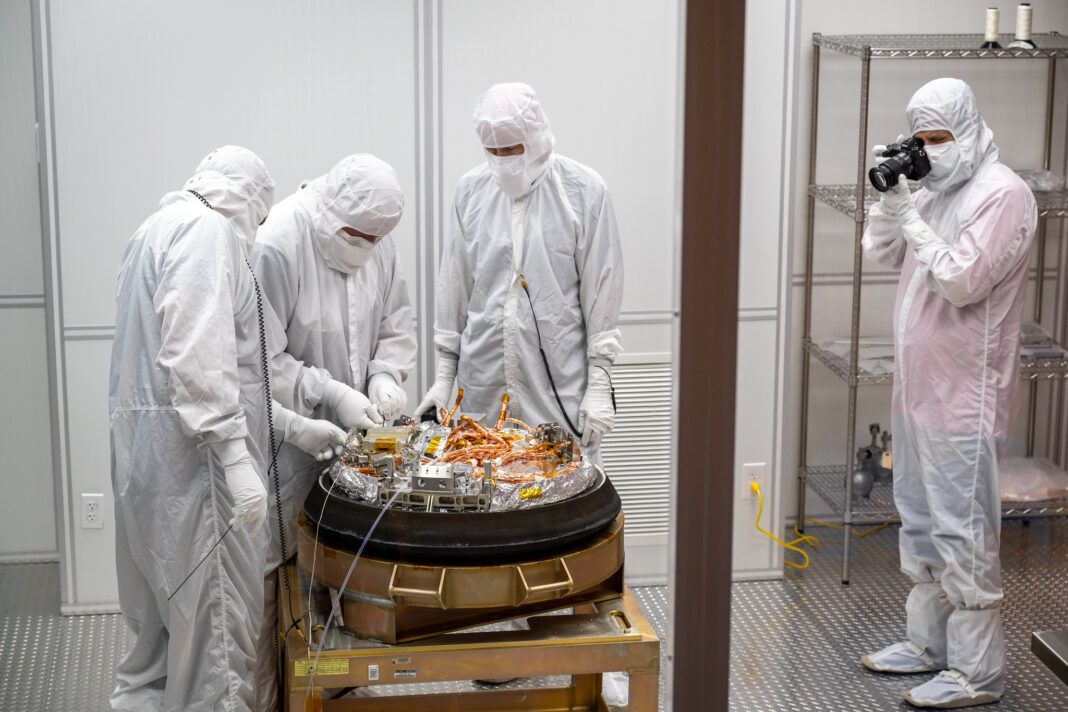In a historic achievement, NASA’s OSIRIS-REx mission has successfully returned a capsule filled with rocks and dust collected from the near-Earth asteroid Bennu, NASA said.. The capsule touched down precisely at 8:52 a.m. MDT on Sunday within the targeted area of the Department of Defense’s Utah Test and Training Range near Salt Lake City.
One of the crucial tasks following the landing was placing the sample under a “nitrogen purge” to maintain its purity for scientific analysis. Nitrogen, being inert, prevents earthly contaminants from affecting the samples, NASA said in a statement.
According to NASA, the returned Bennu samples, estimated at 8.8 ounces or 250 grams, hold immense scientific significance. They will aid researchers worldwide in unraveling the mysteries of planet formation, the origin of organic matter, and water that contributed to life on Earth. Additionally, these samples will enhance our understanding of potentially hazardous asteroids.
NASA Administrator Bill Nelson congratulated the OSIRIS-REx team for their remarkable achievement and praised their collaborative efforts. He also highlighted the importance of asteroid exploration for advancing science and inspiring humanity.
“With OSIRIS-REx, Psyche launch in a couple of weeks, DART’s one year anniversary, and Lucy’s first asteroid approach in November, Asteroid Autumn is in full swing. These missions prove once again that NASA does big things. Things that inspire us and unite us. Things that show nothing is beyond our reach when we work together,” Nelson said.
The Bennu sample, considered the first of its kind in the United States, will be transported to NASA’s Johnson Space Center in Houston on Monday, September 25. There, curation scientists will meticulously analyze, weigh, and distribute pieces of Bennu to scientists worldwide over time.
This achievement is the culmination of years of dedication and teamwork by hundreds of individuals who have guided the mission from its launch on September 8, 2016, to the successful sample collection on October 20, 2020, and the safe return to Earth.
Dante Lauretta, principal investigator for OSIRIS-REx at the University of Arizona, Tucson, expressed, “Today marks an extraordinary milestone not just for the OSIRIS-REx team but for science as a whole. We now have the unprecedented opportunity to analyze these samples and delve deeper into the secrets of our solar system.”
The OSIRIS-REx spacecraft released its sample capsule toward Earth’s atmosphere at 6:42 a.m. EDT, successfully landing near Salt Lake City. This event was tracked by radar, infrared, and optical instruments, and the capsule was retrieved within 70 minutes after a safe landing.
NASA Goddard provided mission management and oversight, while the University of Arizona led the science team. Lockheed Martin Space built the spacecraft, and NASA’s Goddard Space Flight Center managed the project. The mission also featured international partnerships, including the OSIRIS-REx Laser Altimeter instrument from the Canadian Space Agency and collaboration with JAXA’s Hayabusa2 mission.
This achievement marks a significant step in our quest to understand the origins of our solar system and the potential hazards posed by asteroids.
A global media for the latest news, entertainment, music fashion, and more.





